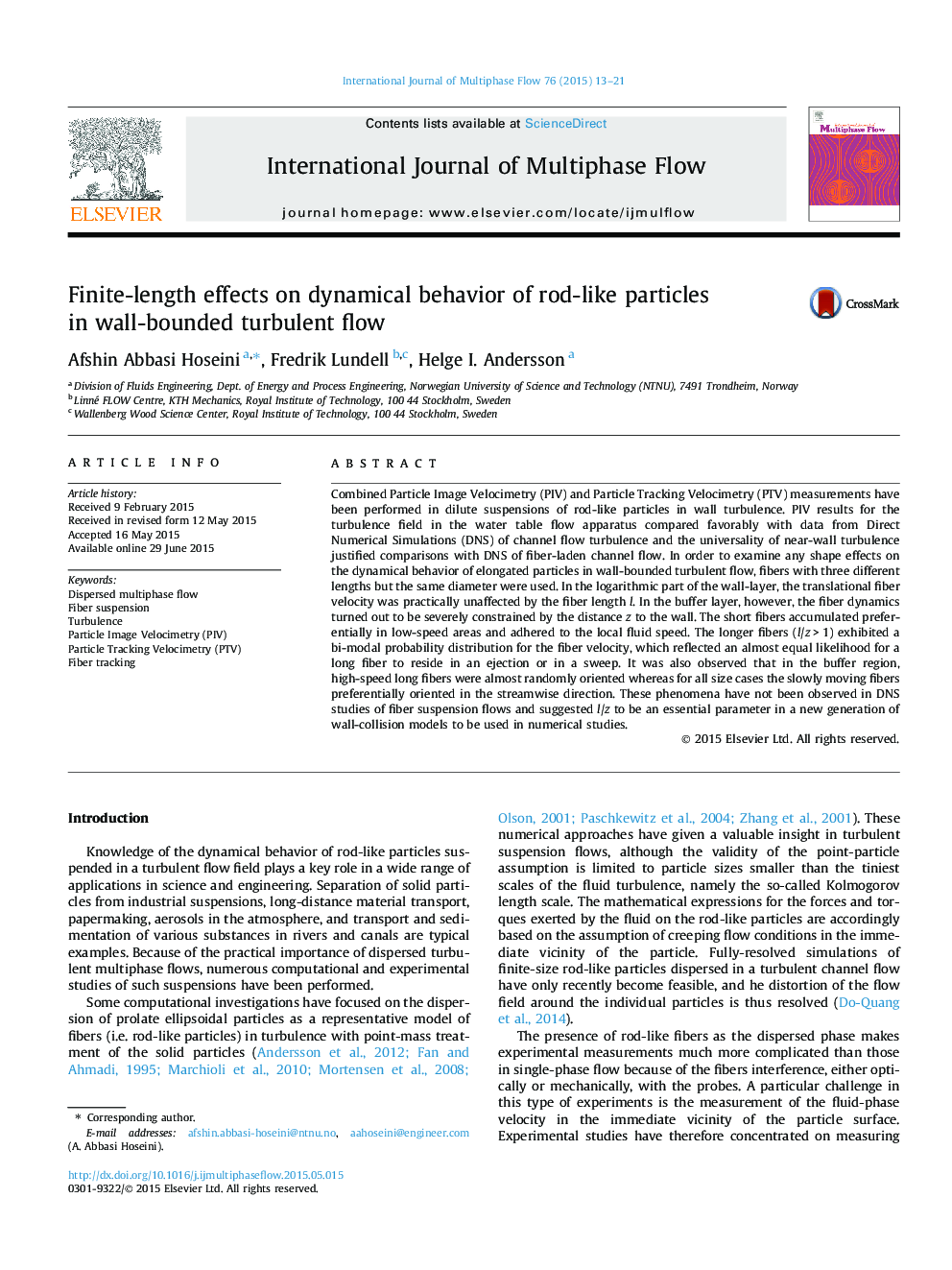| کد مقاله | کد نشریه | سال انتشار | مقاله انگلیسی | نسخه تمام متن |
|---|---|---|---|---|
| 667100 | 1458502 | 2015 | 9 صفحه PDF | دانلود رایگان |
• We study the behavior of fibers in wall turbulence by combined PIV and PTV measurements.
• The fiber length plays a key role for the fiber behavior in the near wall region.
• A balance between the transfer rates of long fibers toward and away from the wall is observed.
• Near the wall, the orientation distribution of the high-speed long fibers is nearly isotropic.
• The PDFs of the fluctuating wall-normal angular fiber velocity are depended on the fiber elongation.
Combined Particle Image Velocimetry (PIV) and Particle Tracking Velocimetry (PTV) measurements have been performed in dilute suspensions of rod-like particles in wall turbulence. PIV results for the turbulence field in the water table flow apparatus compared favorably with data from Direct Numerical Simulations (DNS) of channel flow turbulence and the universality of near-wall turbulence justified comparisons with DNS of fiber-laden channel flow. In order to examine any shape effects on the dynamical behavior of elongated particles in wall-bounded turbulent flow, fibers with three different lengths but the same diameter were used. In the logarithmic part of the wall-layer, the translational fiber velocity was practically unaffected by the fiber length l. In the buffer layer, however, the fiber dynamics turned out to be severely constrained by the distance z to the wall. The short fibers accumulated preferentially in low-speed areas and adhered to the local fluid speed. The longer fibers (l/z > 1) exhibited a bi-modal probability distribution for the fiber velocity, which reflected an almost equal likelihood for a long fiber to reside in an ejection or in a sweep. It was also observed that in the buffer region, high-speed long fibers were almost randomly oriented whereas for all size cases the slowly moving fibers preferentially oriented in the streamwise direction. These phenomena have not been observed in DNS studies of fiber suspension flows and suggested l/z to be an essential parameter in a new generation of wall-collision models to be used in numerical studies.
Journal: International Journal of Multiphase Flow - Volume 76, November 2015, Pages 13–21
